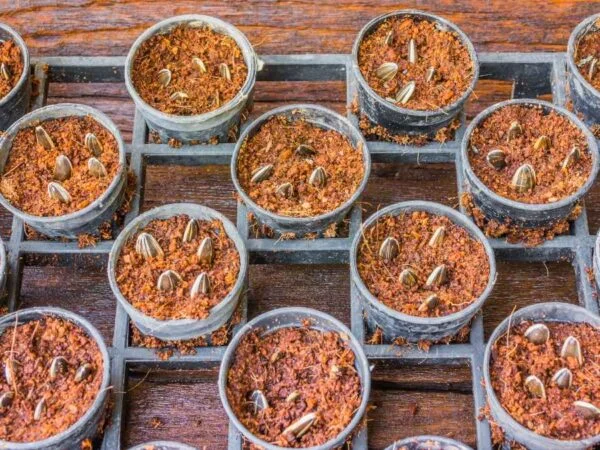Did you know that a wilting sunflower can recover its posture in just a few hours under proper care? Wilting sunflowers are not a lost cause; with the right attention, they can bounce back and stand tall once again. Understanding the reasons behind sunflower wilting and implementing corrective measures promptly can revive these vibrant blooms to their former glory.
Key Takeaways
- Understand why sunflowers wilt to address the issue effectively.
- Identify the reasons behind drooping sunflowers, such as lack of water or sunlight.
- Take proactive steps to prevent sunflowers from wilting, like ensuring proper watering and sunlight.
- Revive droopy sunflowers by providing immediate care, including watering and pruning if needed.
- Implement strategies to prevent future wilting issues by maintaining a consistent care routine.
- By following these steps, you can help your sunflowers stay healthy and vibrant.
Understanding Wilting Sunflowers
Common Causes
Sunflowers can wilt due to various factors, such as insufficient water supply, extreme heat, or poor soil quality. Inadequate hydration is a primary reason for sunflower drooping, impacting their overall health. excessive exposure to intense sunlight can lead to wilting in sunflowers.
When sunflowers lack essential nutrients from the soil, they may start to droop. Poor soil conditions hinder proper growth and development, causing the plants to wilt. Inconsistent watering schedules can also contribute to sunflower wilting, affecting their structural integrity.
Specific Issues
Pest infestations, such as aphids or caterpillars, can damage sunflowers and result in wilting. These pests feed on the plant's leaves and stems, leading to a decline in health. Diseases, like powdery mildew or fungal infections, can weaken sunflowers and cause them to droop.
Root rot is another specific issue that can affect sunflowers, especially when the soil is overly saturated. This condition impairs the roots' ability to absorb nutrients and water effectively, leading to wilting. Furthermore, physical damage, such as broken stems or trampled flowers, can also cause sunflowers to droop.
Reasons Behind Drooping
Lack of Water
Sunflowers droop when they lack sufficient water, impacting their overall health and vitality. Without proper hydration, sunflowers struggle to maintain their structure and appear wilted. The consequences of inadequate water intake include stunted growth and a decline in flower production. Recognize the importance of consistent watering for healthy sunflowers.
Pests and Diseases
Pests and diseases can lead to sunflower wilting by causing damage to the plant's structure and nutrient absorption. When pests like aphids or diseases such as powdery mildew attack sunflowers, they weaken the plant's ability to thrive. Understand the significant role that pests and diseases play in the decline of sunflower health.
Transplant Shock
Transplant shock occurs when sunflowers are moved from one location to another, disrupting their root system and causing them to wilt. This shock can be triggered by improper handling during transplanting or sudden changes in environmental conditions. Explore how transplant shock directly impacts the growth and development of sunflowers.
Preventing Wilting
Support Techniques
Support drooping sunflowers by providing physical support like stakes or cages. These structures help the plant stand upright.
Effective methods include staking, where a stake is gently placed near the stem for support. Another technique is using cages to surround the sunflower, preventing it from bending.
Proper Watering
To prevent wilting, water sunflowers at the base in the morning. Avoid wetting the leaves to prevent disease.
Proper watering is crucial for sunflower health, ensuring moisture reaches the roots without causing waterlogging.
Pest Control
Controlling pests that affect sunflowers involves regular inspection for signs of infestation. Implement natural predators like ladybugs.
Neem oil can be used as a natural pesticide, while maintaining a clean garden helps deter pests.
Reviving Droopy Sunflowers
Solutions for Revival
To revive drooping sunflowers, start by ensuring they receive adequate water and sunlight. Trim any droopy leaves to promote new growth. Support the heavy sunflower heads with stakes to prevent wilting.
Consider using a balanced fertilizer to provide essential nutrients for the resilient sunflower roots. Gently tie the sunflower stems together to prevent them from bending under the weight of the flower heads.
Addressing Young Plants
When caring for young sunflower plants, monitor soil moisture levels regularly to prevent wilting. Ensure that the centre sunflowers are not overcrowded, allowing each plant enough space to thrive.
Apply a layer of mulch around young sunflowers to retain moisture and regulate soil temperature. Regularly check for pests and diseases that could cause the proud sunflowers to wilt prematurely.
Caring for Mature Sunflowers
For mature sunflowers, continue providing ample sunlight and water to maintain their health. Deadhead spent blooms regularly to encourage new growth and prevent the plant from expending energy on heavy seed heads.
Support tall sunflowers with sturdy stakes to prevent them from toppling over in strong winds. Consider applying a phosphorus-rich fertilizer during the flowering stage to promote vibrant blooms.
Preventing Future Issues
Effective Watering Methods
To maintain healthy sunflowers and prevent wilting, consistently water them at the base to reach the roots effectively. Avoid overhead watering to prevent fungal diseases that can lead to wilting. Water deeply but less frequently to encourage deep root growth and sunflower resilience.
- Water at the base
- Avoid overhead watering
- Deep but infrequent watering
When watering sunflowers, consider the soil moisture level before each watering session. Use a moisture meter to determine if the soil is dry enough for watering. Adjust watering frequency based on weather conditions to prevent over or under-watering issues.
Disease Prevention
Preventing diseases in sunflowers is crucial to avoid wilting. Practice crop rotation to reduce disease buildup in the soil. Remove and destroy infected plants promptly to prevent disease spread. Apply organic fungicides preventively to protect sunflowers from common diseases.
- Crop rotation
- Prompt removal of infected plants
- Organic fungicide application
Regularly inspect sunflowers for signs of diseases such as powdery mildew or downy mildew. Monitor leaf discoloration, wilting, or unusual growth patterns. Implement proper sanitation practices by cleaning tools and equipment to prevent disease transmission between plants.
Pest Management
Effective pest management is essential for sunflower health and preventing wilting. Introduce beneficial insects like ladybugs or lacewings to control pests naturally. Use insecticidal soaps or neem oil for organic pest control. Install physical barriers like row covers to deter pests from reaching sunflowers.
- Beneficial insect introduction
- Organic pest control methods
- Physical barriers installation
Inspect sunflowers regularly for pest infestations such as aphids or caterpillars. Handpick larger pests like caterpillars and dispose of them properly. Encourage natural predators like birds by providing bird feeders near sunflower beds to aid in pest control efforts.
Summary
Understanding why sunflowers wilt, identifying the reasons behind drooping, learning how to prevent and revive them, and taking steps to avoid future issues are essential for maintaining healthy and vibrant sunflowers. By addressing these aspects diligently, you can ensure your sunflowers stay robust and beautiful throughout their growth cycle. Remember to monitor their water intake, sunlight exposure, and soil conditions regularly to prevent wilting. Implementing proper care techniques will help revive droopy sunflowers and maintain their health in the long run.
Take action today by applying the preventive measures and revival strategies discussed in this guide to keep your sunflowers thriving. Your dedication to their well-being will be reflected in their appearance, bringing joy and brightness to your garden filled with flowers, like the sun. Ensure you follow the recommended practices consistently for flourishing sunflowers.
Frequently Asked Questions
What are the common reasons behind wilting sunflowers?
Sunflowers can wilt due to lack of water, extreme heat, poor soil quality, or pests/diseases. Ensure proper watering, provide adequate shade in hot weather, use well-draining soil, and monitor for pests to prevent wilting.
How can I prevent my sunflowers from wilting?
To prevent wilting, water sunflowers deeply but infrequently, ensure they receive enough sunlight, fertilize appropriately, protect from strong winds, and regularly inspect for signs of pests or diseases.
How can I revive droopy sunflowers?
Revive droopy sunflowers by watering them thoroughly at the base, providing temporary shade during peak sunlight hours, removing any damaged leaves or stems, and ensuring proper drainage to avoid waterlogging.
What are some tips for preventing future wilting issues in sunflowers?
Prevent future wilting by maintaining consistent watering schedule, improving soil quality with organic matter, spacing plants adequately for good air circulation, mulching to retain moisture, and promptly addressing any signs of pests or diseases.
Why is understanding the causes of wilting important for sunflower care?
Understanding the causes of wilting helps you take proactive measures to maintain healthy sunflowers. By identifying and addressing issues early on, you can prevent extensive damage, promote optimal growth, and enjoy vibrant blooms throughout the season.
Image Source: Paid image from CANVA





